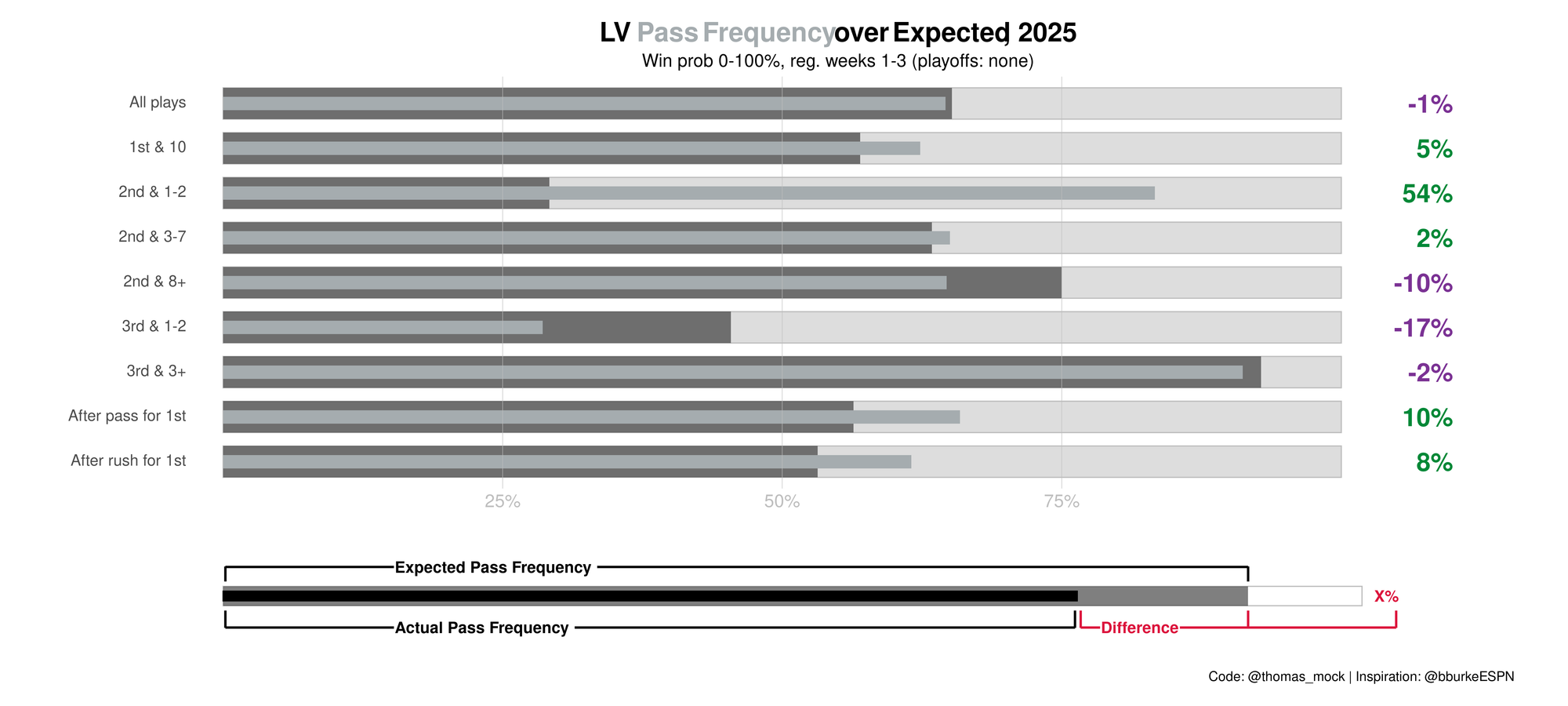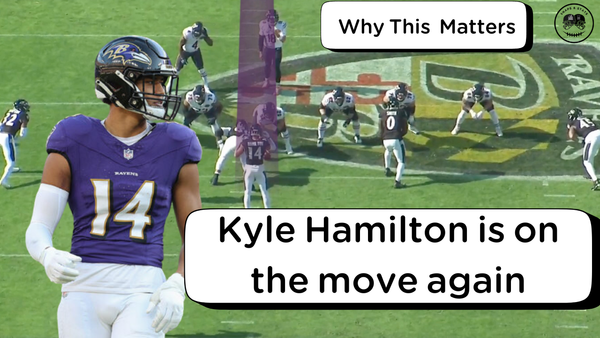Four Ups, Four Downs: Week 3

Welcome to Four Ups, Four Downs, where we'll look at some of the good and bad from the previous week of NFL games. This week, we have receiver usage, coaching decisions, and quarterback struggles.
Up: Throwing To A.J. Brown
In Week 1, A.J. Brown had one target for eight yards. In Week 2, the Eagles threw at him more often, but eight targets only turned into five catches for 27 yards. Halfway through the Eagles’ 33-26 win over the Los Angeles Rams, it appeared there was a similar game plan, ignoring the receiver who had 3.3 yards per route run last season, second only to Puca Nakua, according to FTN.
The Eagles’ passing game has struggled through the first three weeks (16th in passing DVOA) but the biggest sign of life came when Philadelphia started throwing to Brown. Brown had one target in the first half but finished the game with six catches for 109 yards and a touchdown on 10 targets. Getting Brown involved immediately changed the vibe of the offense. Philadelphia averaged 1.5 yards per play and had -1 net passing yards in the first half before looking more like the best version of the championship offense.
With 12:22 left in the third quarter, the Eagles had a second-and-13 on their own 29-yard line. Brown was lined up wide to the right with DeVonta Smith next to him in the slot with the Rams in a two-high shell. The deep safety to that side started on the hash and, as the coverage rotated to more of a single-high look, continued to stay on top of Smith, which left an open lane down the sideline for a go ball to Brown, which went for 38 yards.
That impacted the next play. Brown, again, was lined up wide to the right with Dallas Goedert in the slot. With the ball on the right hash, the safety lined up further into the boundary. At the snap, Goedert ran a seam similar to Smith the play prior. The safety turned to face Brown and defend against another pass down the sideline, which left no one covering Goedert.
We’ve seen the Eagles have spurts as an unstoppable offense — we just haven’t seen much of that yet this season. The idea behind this team is that there’s so much talent on offense that there should always be something that can be a positive matchup against any opponent. The more the Eagles lean into that, the better this team should be.
Down: Raiders Identity
After an impressive opening week, the Raiders felt like they could be the frisky team some expected them to be this season. Two weeks later, the Raiders are 1-2 following a 41-24 loss to the Marcus Mariota-led Washington Commanders. In Year 1 under Pete Carroll, the Raiders still haven’t completely figured themselves out.
Las Vegas has used 11 personnel on 68.8% of offensive plays so far, which is the 12th-highest rate in the league, per SumerSports. With Brock Bowers and Michael Mayer, the Raiders were expected to be a heavy 12 personnel team that could do anything from those two tight end sets. Unfortunately, both tight ends have dealt with injuries that haven’t allowed the offense to use its personnel as intended. Last week, Bowers was hurt going into the Monday night game and was little more than a decoy and Mayer left the Week 3 game early.
Last year, Bowers had arguably the most impressive season for a rookie tight end, mostly done as a slot receiver. Per PFF, Bowers lined up in the slot for 43.1% of his snaps, inline for 39%, and out wide for 16.2% in 2024. So far this season, Bowers has been inline on 59.6% of his snaps, in the slot 29%, and out wide for just 10.6%.
With Bowers inline more, the Raiders aren’t keeping an extra player in to block when they’re in 11 personnel and that’s left some problems in pass protection. Geno Smith was pressured on 47.1% of his dropbacks in Week 3, per FTN. That’s on top of a run game that hasn’t been able to get going. The Raiders are 32nd in run block win rate, per ESPN, and Ashton Jeanty has averaged 0.8 yards before contact per rush, which is the sixth-lowest figure among running backs. At the same time, Jeanty is 11th among backs in the rate of avoided tackles forced. But the back isn’t blameless. According to Next Gen Stats, just 28.3% of Jeanty’s rushing attempts have more rushing yards than expected, the seventh-lowest rate among backs.
The Raiders now have one of the pass rates above expectation on second and short, where they have a 20% passing success rate. That’s led them to running the ball on third and short, which has led to a 40% rushing success rate — the lowest in the league, according to FTN.

Up: Jaxon Smith-Njigba, WIDE receiver
During the first two year of his career, Jaxon Smith-Njigba was a primary slot receiver. With the signing of Cooper Kupp during the offseason, there was a question about how the roles would play out with the top two receivers predominantly lining up inside. Well, there’s been little issue so far this season since Smith-Njigba has moved to the outside. He hasn’t just changed his role, he’s excelled at it.
Through three weeks, Smith-Njigba has lined up wide on 77.3% of his snaps. Against the Saints in Week 3, he had his highest outside rate of the season at 85.7% and 94 of his 96 receiving yards came outside. With the wide alignment, the Seahawks have used Smith-Njigba as more of a vertical threat. He already has half of the receptions of at least 20 air yards (four) as he did over the full 2024 season (eight).
Those vertical plays have worked great with the rate of play-action the Seahawks have run with Sam Darnold.
Smith-Njigba leads the NFL in receiving yards from a wide alignment and has averaged 5.2 yards per route run from there. Seattle has done an excellent job of allowing Smith-Njigba to still act as he would from the slot while lining up outside. On the deep shot, he still took an inside release to go down the middle of the field. On his touchdown catch, Seattle used motion with Tory Horton to widen the outside corner and free up space for Smith-Njigba to cross the field.
There’s a smoothness to Smith-Njigba’s routes that allows him to effortlessly break off routes. As an outside receiver, that’s allowed for more room in the middle of the field. Per Next Gen Stats, his 220 receiving yards on in-breaking routes are second only to Puka Nacua’s 231.




